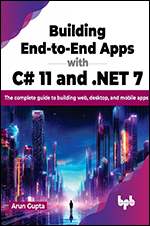C# Graphics Programming
- 1h 5m
- Rod Stephens
- John Wiley & Sons (US)
- 2008
This Wrox Blox teaches you how to add graphics to C# 2008 applications, explaining fundamental graphics techniques such as: drawing shapes with different colors and line styles; filling areas with colors, gradients, and patterns; drawing text that is properly aligned, sized, and clipped exactly where you want it; manipulating images and saving results in bitmap, JPEG, and other types of files. Also covered are instructions for how to greatly increase your graphics capabilities using transformations. Transformations allow you to move, stretch, or rotate graphics. They also let you work in coordinate systems that make sense for your application. You will also learn how to use all of these techniques in printouts. The author describes the sequence of events that produce a printout and shows how to generate and preview printouts.
The final sections describe two powerful new graphic tools that were introduced with .NET Framework 3.0: WPF graphics and FlowDocuments. WPF applications can use XAML graphic commands to declaratively draw and fill the same kinds of shapes that a program can draw by using graphics objects.
Finally, a discussion on the FlowDocument object shows you how to define items that should be flowed across multiple pages as space permits. This lets you display text, graphics, controls, and other items that automatically flow across page breaks. FlowDocument viewers make displaying these documents easy for you, and simplifies the user's reading of the documents.
This Wrox Blox also contains 35 example programs written in C# 2008, although most of the code works in previous versions of C# as well. The most notable exceptions are WPF graphics and FlowDocuments, both of which require WPF provided in .NET Framework 3.0 and later.
About the Author
Rod Stephens is a consultant and author who has written more than 18 books and 250 magazine articles, mostly about Visual Basic. Currently he is a regular contributor of Visual Basic and C# articles at DevX.com (devx.com). During his career he has worked on an eclectic assortment of applications spanning such fields as repair dispatch, fuel tax tracking, professional football training, wastewater treatment, geographic mapping, and ticket sales. His VB Helper web site (vb-helper.com) receives more than 7 million hits per month and provides three newsletters and thousands of tips, tricks, and examples for Visual Basic programmers.
In this Book
-
Using Graphics, Pens, and Brushes
-
Using Advanced Pens and Brushes
-
Drawing Text
-
Manipulating Images
-
Using Transformations
-
Printing
-
Using WPF Graphics
-
Building FlowDocuments
-
Conclusion




